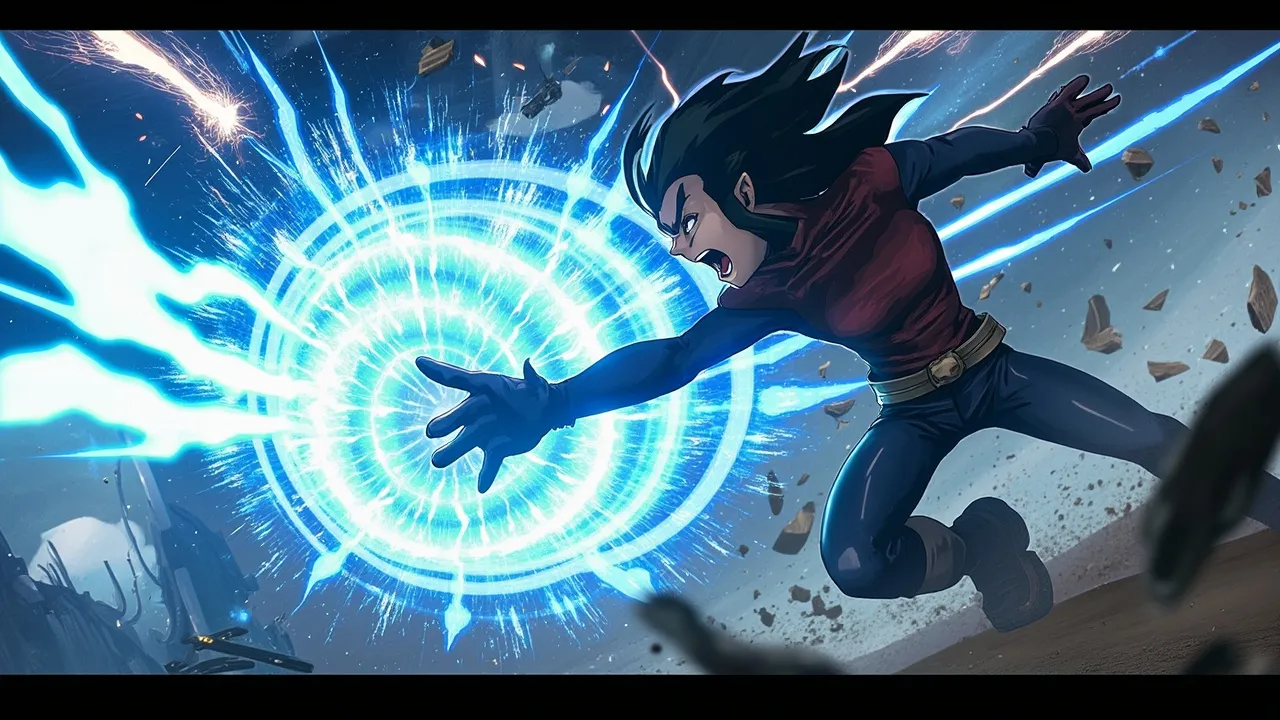Sonic Scream Superpower Explained

Sonic Scream Video Demo 🎬
Table of Contents
What Is Sonic Scream
Sonic scream is a power that turns the voice into a weapon, projecting concentrated sound waves that can stun, shatter, or push back targets. By modulating volume and frequency, a user of sonic scream can create shockwaves, ultrasonic tones, and precise acoustic effects—from breaking glass to disabling drones. In fiction and games, this sound manipulation often includes control over resonance, direction, and duration. Readers exploring related abilities can browse our growing superpower wiki and experiment with the random superpower generator for inspiration.
Core Abilities of Sonic Scream
The exact skill set varies by universe, but most versions of sonic scream share the following core features. Each ability can be tuned by breath control, pitch shifts, and resonance shaping.
-
Sonic Blast (Shockwave Projection)
A focused burst that knocks back opponents, dents metal, and fractures brittle materials. At high decibels, it produces concussive force comparable to a small explosion. -
Frequency Manipulation & Acoustic Resonance
The user adjusts pitch to cause targeted vibrational damage—shattering glass, loosening bolts, scrambling sensors, or vibrating locks open. Resonance matching can “sing apart” a structure without leveling a whole room. -
Ultrasonic Emission
Beyond human hearing, ultrasonic frequencies can jam microphones, confuse animals, or overload certain sensors. Skilled users craft narrow beams to avoid collateral noise. -
Auditory Incapacitation
A wide-angle “siren wash” induces vertigo, nausea, and temporary hearing loss. This is ideal for crowd control, non-lethal takedowns, and breaking formations. -
Directional Beamforming
By shaping the mouth, throat, and tongue (plus learned diaphragm control), the user aims sound like a flashlight, minimizing friendly fire and maximizing range. -
Vocal Shielding (Counter-Pressure Wave)
A continuous, outward-facing wavefront pushes dust, gas, or incoming projectiles off course at short range—more a disruption field than a true barrier. -
Echo-Sense (Passive Sonar)
Low-intensity clicks or hums map a space via returning echoes. This echolocation helps in darkness, smoke, or fog, and can reveal hidden voids, tripwires, and moving targets. -
Vibration Damping (Self-Protection)
Some portrayals include a feedback buffer around the ears and inner skull that prevents self-inflicted hearing damage during high-output screams.
Advanced Skill Expressions
-
Harmonic Stacking: Layering multiple frequencies to bypass shields or cancel opposing waves.
-
Acoustic Engraving: Fine control for cutting, welding, or etching using standing waves.
-
Hypersonic Shriek: A brief, needle-pitched burst that penetrates armor seams or cracks ceramic plating.
Application / Tactical Advantages in Combat
Sonic scream is a flexible toolkit with options for offense, defense, control, and support:
-
Opening Moves & Zone Control:
A cone-shaped shockwave scatters melee attackers, buys space, and breaks enemy momentum. On approach, a sweeping siren induces disarray, making coordinated counters difficult. -
Precision Strikes:
Targeted resonance can disable drones, crack visors, or loosen structural joints on exo-suits without harming nearby allies. Against armored foes, a narrow ultrasonic beam exploits weak points. -
Anti-Swarm Utility:
Sound carries across groups. A single scream can disarm or stun multiple targets, pop non-hardened earpieces, and desynchronize enemy comms. -
Anti-Cover Tactics:
Vibrational damage passes through gaps and vents. Resonance can rattle weapons out of hands or collapse fragile cover without a direct line of sight. -
Defensive Disruption:
Counter-pressure waves skew projectile trajectories at close range, disperse smoke, and buffet thrown explosives away from the team. -
Mobility & Coordination:
Echo-sense maps stairwells, detects movement behind walls, and maintains team spacing in low-visibility conditions. Short coded pulses act like sonic “hand signals.” -
Rules of Engagement (Non-Lethal):
Many scenarios favor incapacitation over harm. Broad-spectrum tones that induce disorientation meet that brief and reduce collateral damage.
Level: Level 1 🏙️, Level 2 🌇, Level 3 🌃
Level 1 🏙️

Profile: New or awakening user.
Output: 90–110+ dB in bursts; limited range.
Capabilities: Startle and disorient single targets; shatter glass and brittle ceramics; brief pushback at close range.
Control Focus: Learning breath support, safe warmups, and cool-downs to prevent vocal strain; practicing basic beam direction; protecting teammates’ hearing.
Common Setbacks: Hoarseness, dizziness after prolonged screams, and poor aim in echoey rooms.
Level 2 🌇

Profile: Trained operative or established hero.
Output: 120–150+ dB; reliable aim and frequency selection.
Capabilities: Directed sonic blasts that topple groups; selective resonance against locks, drones, and sensors; sustained “siren wash” for crowd control; basic echo-sense.
Control Focus: Harmonic selection for specific materials; on-the-fly shifts between wide cone and pencil beam; timing screams between team reloads.
Common Setbacks: Environmental bounce-back in tight corridors; potential to overload comms if not synchronized with team gear.
Level 3 🌃

Profile: Master-level specialist.
Output: Extreme decibel peaks with fine-grain control over multiple harmonics simultaneously.
Capabilities: City-block reach in open air; shockwaves that crumble facades; precision ultrasonic scalpels; multi-channel beamforming to strike and shield at once.
Control Focus: Dynamic power throttling to avoid collateral; real-time cancellation of enemy sonic attacks; complex echo-cartography in urban canyons.
Common Setbacks: Massive energy demands and recovery time; ethical constraints in populated zones; risk of infrastructure damage if misused.
Limitations of Using the Sonic Scream
Even with training and gear, this power has clear boundaries:
-
Physiological Strain:
Vocal cords, lungs, and diaphragm can suffer microtears or fatigue. Overuse risks temporary aphonia (loss of voice) and, in gritty settings, long-term damage without healing abilities. -
Environmental Blowback:
Enclosed or reflective spaces amplify sound, causing rebound damage or disorienting the user. Water and dense fog attenuate or distort output. -
Ally Safety & Collateral:
Sound is hard to confine. Without disciplined aim and team ear protection, friendly units can be stunned or deafened. Sensitive equipment may fail. -
Power Curve & Stamina:
Continuous emission drains oxygen and core strength. Peak output is best used in short, intentional bursts with recovery windows. -
Countermeasures:
Acoustic foam, adaptive noise cancellation, vibration dampers, and soundproof fields can blunt or nullify attacks.
Weakness Against What Other Superpowers
-
Silence or Sound Nullification:
Powers that remove or absorb sound eliminate both attack and echo-sense. -
Force Shields & Density Control:
Dense barriers and kinetic fields diffuse pressure waves before they reach the target. -
Vibration Manipulation:
Adversaries who control vibrations can phase, redirect, or cancel the wavefront mid-air. -
Telepathy / Mind Attacks:
Mental intrusions bypass physical defenses and operate regardless of acoustics. -
Seismic/Geokinesis Grounding:
Grounded structures with tuned dampers reduce resonance-based damage and limit harmonic entry points. -
Enhanced Durability or Pain Dampening:
High-durability targets, synthetic ear structures, or pain-null powers push through stun effects and stay on mission.
Synergistic Power Combos
Pairing sonic scream with complementary abilities unlocks advanced tactics:
-
Aerokinesis (Wind Manipulation):
Wind channels carry and focus sound, increasing range and coherence. Gusts also clear smoke so echo-sense and teammates maintain visibility. -
Breath Control / Enhanced Physiology:
Super lungs, expanded oxygen reserves, or regenerative vocal cords extend output windows and reduce injury risk. -
Telekinesis (Wave Shaping):
Fine TK fields can “hold” a standing wave in place, creating temporary sound walls or oscillating traps. -
Electric Field Manipulation:
Combine EMP pulses with a sonic siren to overload sensors and microphones simultaneously—a classic anti-tech stack. -
Illusion or Light Bending:
Pair disorienting audio with visual confusion to overwhelm target processing. Flash-then-scream sequences are brutally effective for shock entries. -
Geomancy / Construction Control:
Reshape rooms into non-reflective, sound-friendly corridors mid-fight to prevent blowback and protect allies. -
Seismic or Vibration Powers:
Sync your harmonics with a teammate’s vibration pulses to create devastating resonance that topples drones, mechs, or weak foundations.
Known Users
Many fictional characters wield voice as a weapon, showcasing the variety of this power in popular media:
-
Black Canary (DC Comics) — Known for the “Canary Cry,” combining pinpoint resonance with acrobatic combat and tactical awareness.
-
Banshee (Marvel) — Projects sonic blasts, achieves limited flight via sound, and often uses frequency shifts for precision disables.
-
Silver Banshee (DC) — A supernatural spin on sonic power, leaning into curse-laden screams and fear effects.
-
Sindel (Mortal Kombat) — A game-centered interpretation where sonic force complements martial prowess.
For more abilities like sonic scream, explore the rest of our superpower wiki, or discover a random new power with our generator.
